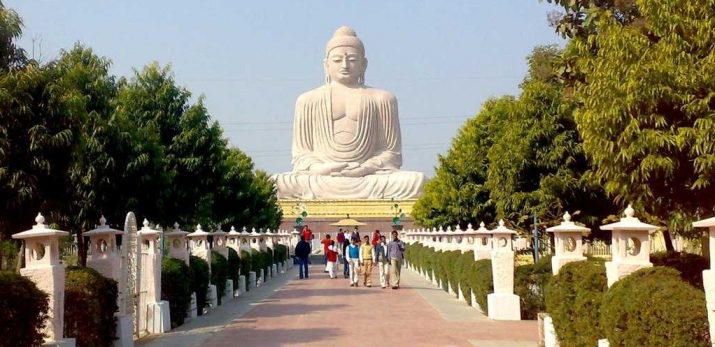The sixth to the fourth centuries B.C.E. marked a time of worldwide intellectual ferment. It was an age of great thinkers, such as Socrates and Plato, Confucius and Laozi. In India, the period of the fifth and fourth centuries B.C.E. was the age of the Buddha, who inspired a religion that eventually spread far beyond his homeland.
The chieftain Siddhartha, born into the ruling family of a small republic bordering present-day India and Nepal, abandoned the pleasures of the palace to seek the true meaning of life. Sitting in yogic meditation beneath a banyan tree, he achieved enlightenment and was known thenceforth as the Buddha, or Enlightened One. He spent the remaining forty years of his life preaching his faith and converting vast numbers to his Middle Path, which rejected the extremes of both luxury and asceticism and advocated a life of good intentions with the ultimate goal of achieving nirvana, or a release from the cycle of rebirth. Buddhism, like other faiths born in India, espouses the belief in repeated lives on earth with the opportunity to improve the conditions of the next birth by performing good deeds in this life. After the Buddha’s death, his cremated remains were placed in relic caskets within funerary mounds known as stupas, which constitute the focus of Buddhist monastic establishments and attract pilgrims from across the globe.
In the earliest Buddhist art of India, the Buddha was not represented in human form; instead, his presence was indicated by a sign or “trace,” such as a footprint, an empty seat, a parasol, or a stupa. By the first century, the Buddha, who had never claimed to be anything but a human being who had found a path to truth, had been deified. The newly introduced human figure now appeared across India and dominated the artistic scene. Clad in a monastic robe, the image always displayed two signs of his superhuman perfection – the ushnisha, or cranial bump (disguised by artists as a topknot), representing his omniscience, and the urna, or curl of hair (dot) on the forehead, symbolizing his renunciation.

During the first century, varying image types appeared in India. In ancient Gandhara (modern-day Pakistan and Afghanistan), sculptors combined artistic elements from the Hellenistic world with Indian Buddhism to create a unique image. Youthful Buddhas with hair arranged in wavy curls and wearing monastic robes covering both shoulders are reminiscent of toga-clad Roman statues. Artists at Mathura, in northern India, produced an indigenous image whose body was expanded by sacred breath and whose clinging robe was draped to leave the right shoulder bare.
The succeeding Gupta period (320) in north India, from the fourth to the sixth century, witnessed the creation of an “ideal image” of the Buddha. With their downward glance and spiritual aura, hair arranged in tiny curls, and sensuous body visible beneath a transparent robe, Gupta Buddhas became the model for future generations of artists in India, Nepal, Thailand, and Indonesia.
The Buddhist faith evolved over the centuries to incorporate an expanded pantheon of deities, including Maitreya, the Buddha of the Future, compassionate celestial beings known as bodhisattvas, as well as a range of protective deities, frequently of fearsome appearance. Buddhism had traveled a long way from its simple beginnings. When Buddhism declined in India proper during the twelfth century, this later esoteric form continued to flourish in the Himalayan territories of Nepal and Tibet.
